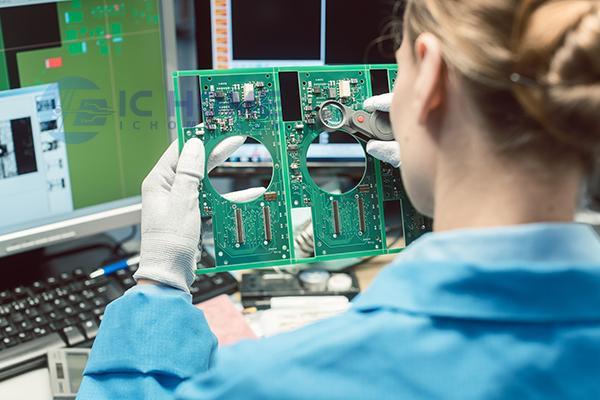Selecting an Electronic Component Supplier: The Importance of Quality Control
When sourcing electronic components, procurement professionals must consider various factors to ensure they receive high-quality parts. Among these factors, quality control stands out as a critical determinant of supplier reliability. Evaluating a supplier’s historical defect rates, return rates, and rework statistics can provide valuable insights into their quality management practices.

Why Quality Control Matters
Quality control directly impacts the performance, safety, and longevity of electronic products. A supplier with inadequate quality control processes can introduce risks such as defective components, system failures, and increased production costs due to rework or product recalls. Furthermore, poor quality can affect a company’s reputation and lead to customer dissatisfaction.
By scrutinizing a supplier’s quality control framework, businesses can minimize risks associated with counterfeit or substandard components. Ensuring a rigorous quality management system (QMS) is in place helps maintain consistency, compliance with industry standards, and overall reliability of the supplied parts.
Key Quality Metrics to Evaluate
To assess a supplier’s commitment to quality, procurement teams should focus on the following key performance:
1. Historical Defect Rate
The defect rate, often expressed as a percentage of faulty components over total units supplied, reveals the supplier’s ability to deliver defect-free products. A consistently high defect rate is a red flag, indicating potential weaknesses in manufacturing, sourcing, or quality inspection processes. It’s advisable to compare defect rates among multiple suppliers to identify the most reliable options.
2. Return and RMA (Return Merchandise Authorization) Rate
The return rate reflects how often customers need to return purchased components due to quality issues. A high return rate suggests frequent failures or mismatches between specifications and actual performance. Suppliers with lower return rates typically invest in stringent testing and validation before shipping products.
3. Rework and Repair Rates
A supplier’s rework rate measures the percentage of components requiring modification or repair after initial production. High rework rates indicate inconsistencies in manufacturing processes, leading to potential reliability concerns. Companies should prefer suppliers with minimal rework needs, as this often correlates with superior production precision and material quality.
How to Obtain and Analyze Quality Data
Request Supplier Quality Reports
Reputable suppliers maintain detailed records of their quality performance, including defect analysis, failure reports, and corrective actions. Requesting these reports can provide transparency into their historical quality performance.
Audit the Supplier’s Facilities
Conducting on-site audits allows procurement teams to evaluate a supplier’s production and quality control processes firsthand. Observing how suppliers implement quality inspections, testing procedures, and certifications (such as ISO 9001) can reveal the effectiveness of their quality assurance measures.
Check Industry Certifications and Compliance
Suppliers that adhere to industry standards like ISO 9001, AS9100 (for aerospace), or IATF 16949 (for automotive) demonstrate a commitment to quality control. Compliance with these standards suggests that the supplier follows globally recognized best practices in manufacturing and quality management.
Gather Customer Feedback and Reviews
Customer testimonials, reviews, and industry references can provide additional insights into a supplier’s reliability. Engaging with other businesses that have experience with the supplier can help identify recurring issues or strong points.
Conclusion
Selecting the right electronic component supplier is a strategic decision that influences a company’s product quality and operational efficiency. By prioritizing quality control and examining defect rates, return statistics, and rework percentages, procurement teams can mitigate risks and ensure a stable supply chain. Thorough due diligence, including supplier audits and certification checks, will lead to partnerships with reliable suppliers that uphold high-quality standards. In the competitive electronics industry, a focus on quality is essential for long-term success.




